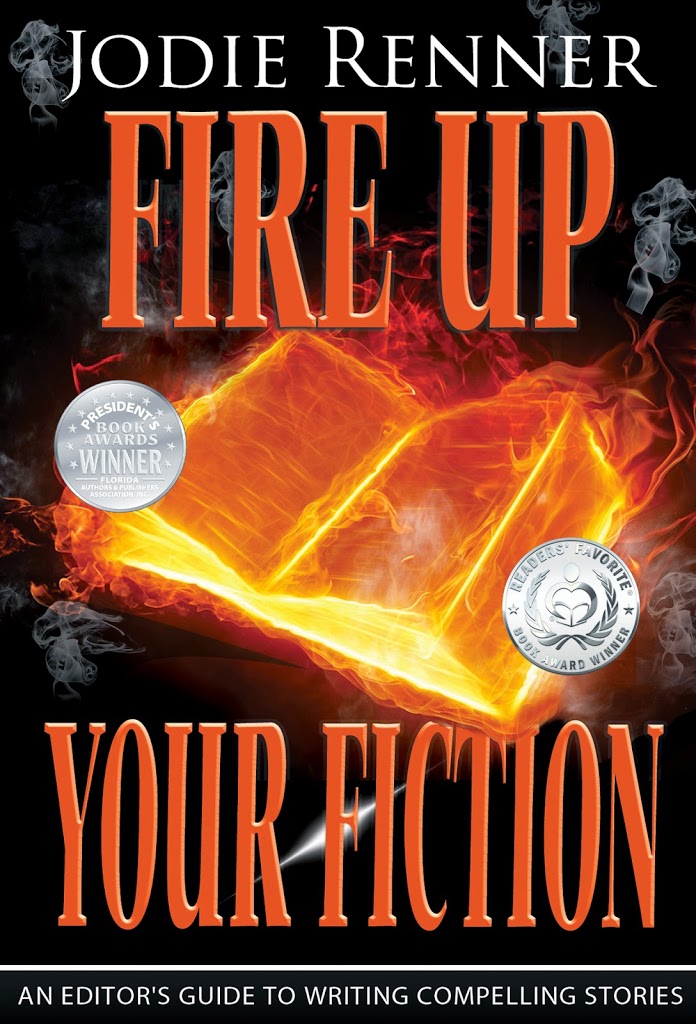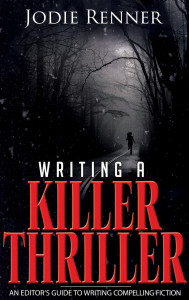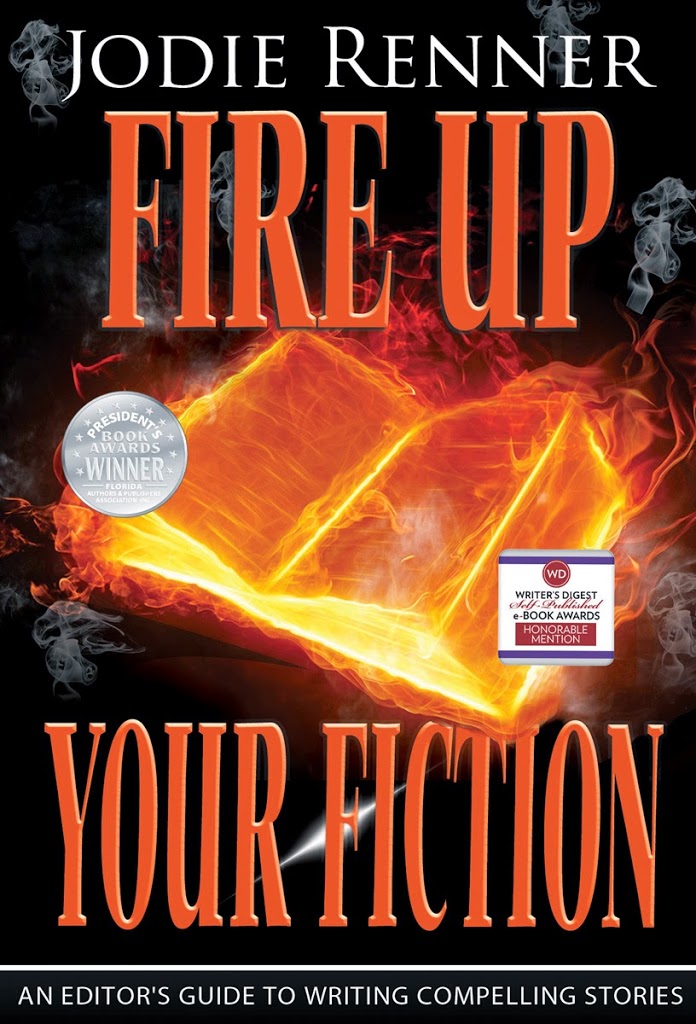 by Jodie Renner, editor, author, speaker @JodieRennerEd
by Jodie Renner, editor, author, speaker @JodieRennerEd
In POV 101 – Get into your protagonist’s head and stay there, I discussed the effectiveness of starting out your story in your protagonist’s point of view and staying there for most of the novel.
But what if you want to show how other people are feeling? If they’re important characters, like the villain, a romantic interest, or a close friend or family member, you can give them their own POV scenes, where you get into their heads and we see their thoughts, emotions, goals, aspirations and fears.
If they’re in the same scene as your main character, you show their thoughts, feelings and attitude only through what your protagonist can perceive—their words, tone of voice, body language and facial expressions. Say you’re writing a romantic suspense or mystery, and you’re in the heroine’s point of view, showing her thoughts, perceptions and reactions. The hero, whom she’s just met under unfortunate circumstances, is angry. You’ll show his thoughts and reactions, not from inside him at that point (What the hell is going on here? he thought. What’s she trying to pull off, anyway?), but by what the heroine is seeing and hearing—his tense posture, hunched shoulders, clenched fists, furrowed brows, set mouth, clipped tone of voice, angry words, etc.
The general rule of thumb is “one scene, one viewpoint.” Or even better, wait for a new chapter to change the point of view to someone else’s. If you change the viewpoint within a scene, it’s best to do it only once, and leave a blank space before you start the next person’s point of view. Ping-ponging back and forth can be jarring and confusing to the reader. This is what’s referred to as “head-hopping.” Some writers go so far as to leave three asterisks (* * *) and spaces above and below to indicate a switch in viewpoint within a scene, but I think that’s too jarring and disruptive to the flow of action, since we’re still in the same scene. Three asterisks, centered, are best reserved to indicate a shift in place and time.
So why is it so important to avoid switching viewpoints (head-hopping) within scenes?
 According to Cynthia VanRooy, “When a reader becomes emotionally engaged in a book, he or she enters into the story. The reader understands the book world isn’t real, but in order to fully enjoy the story, he or she chooses to temporarily pretend otherwise, or to suspend their disbelief. […]
According to Cynthia VanRooy, “When a reader becomes emotionally engaged in a book, he or she enters into the story. The reader understands the book world isn’t real, but in order to fully enjoy the story, he or she chooses to temporarily pretend otherwise, or to suspend their disbelief. […]
“Every time you shift the reader from one character to another, they are jarred out of their suspension of disbelief and reminded that they’re only reading a story. Do that often enough and they’ll stop reading your story. Scene changes or new chapters are the best and least disruptive places to change POV.”
Here’s an example of a viewpoint gaffe, which I made up:
Our heroine, Carole, is stirring the spaghetti sauce on the stove and talking to her husband on the phone. They’re discussing the fact that their son, Colton, is grounded. Suddenly, the author jumps into her son’s head and tells us about Colton sneaking by behind her back (his rap music is playing loudly in his room), and out the front door, then jumping on his bike and racing off. Back to Carole, who continues to stir the spaghetti and talk on the phone.
What’s wrong here? We were in Carole’s POV, and she had her back turned so she wouldn’t know Colton was sneaking past, especially with all that noise coming from his room. And how would she know he’s riding away on his bike? Another jarring POV shift in the same scene would be if we suddenly started seeing her husband waving his secretary away because he’s in an important conversation. We’re in Carole’s POV in this scene, and she can’t see what her husband is doing at his office.
Here’s another example of ping-ponging point of view, where we the readers jump back and forth over miles, within seconds.
We start out in Steve’s point of view, who’s in trouble and has just picked up the phone and called his wife, Grace:
“Grace, thank god you’re home. This is all too much for me. My life is crumbling around me and I can’t seem to do anything about it,” Steve said, closing his eyes and rubbing his face.
The sadness and despair in his voice brought tears to Grace’s eyes.
“I have to think.” There was long pause before Steve continued. “Luckily, George is right here. I’ll ask if he knows a good attorney who can help with this.”
“That sounds good.” She felt some relief.
“I’ll call you later,” Steve said, then hung up and slumped back in his chair.
“I’ll be waiting,” she said softly. The call ended before she could say I love you.
What’s wrong with how this scene is written?
Choose either Steve or Grace and play the scene from his or her POV. Show us only what he or she can see, hear, and perceive.
A quick way to check whose POV you’re in is to get out the highlighters or colored pens and choose a different color for each of your main characters. Pick your protagonist’s color, then start highlighting or underlining sentences that describe scenes, people, perceptions, and emotions strictly from his or her POV. Do the same for other characters, with their color. When you’re done, you should have paragraphs, and preferably scenes, of only one color. If you have another color creeping into that scene, see if you can rewrite those sentences from the dominating character’s POV. If you have a number of colors within one scene, you’ve got some revisions to do. And as Stephen King says, “Writing is rewriting.”
 By the way, my third book, Captivate Your Readers, gets into a lot of detail on engaging your readers and bringing your story and characters to life by using deep point of view, showing instead of telling, and stepping back as the author to let the characters tell the story in their own voice.
By the way, my third book, Captivate Your Readers, gets into a lot of detail on engaging your readers and bringing your story and characters to life by using deep point of view, showing instead of telling, and stepping back as the author to let the characters tell the story in their own voice.
Also, check out POV 103 – Engage Your Readers with Deep Point of View here on TKZ. And check out the handout to my workshop “Engage the Readers with Deep Point of View” on my own blog.
Jodie Renner is a freelance fiction editor and the award-winning author of three craft-of-writing guides in her series An Editor’s Guide to Writing Compelling Fiction: Captivate Your Readers, Fire up Your Fiction, and Writing a Killer Thriller. She has also published two clickable time-saving e-resources to date: Quick Clicks: Spelling List and Quick Clicks: Word Usage. You can find Jodie at www.JodieRenner.com, www.JodieRennerEditing.com, her blog, http://jodierennerediting.blogspot.com/, and on Facebook, Twitter, and Google+.


